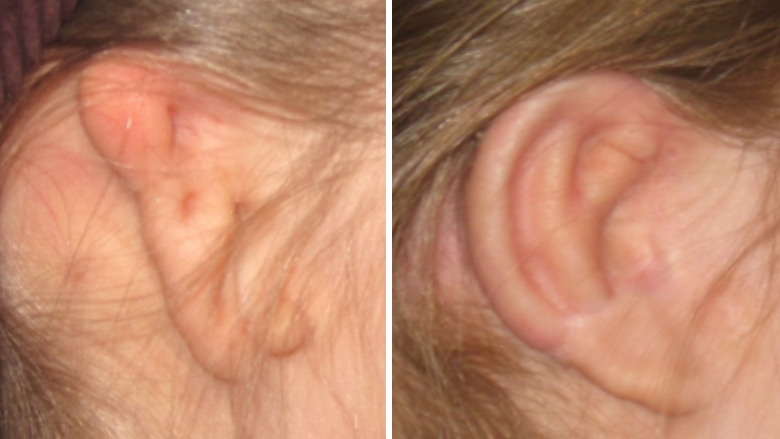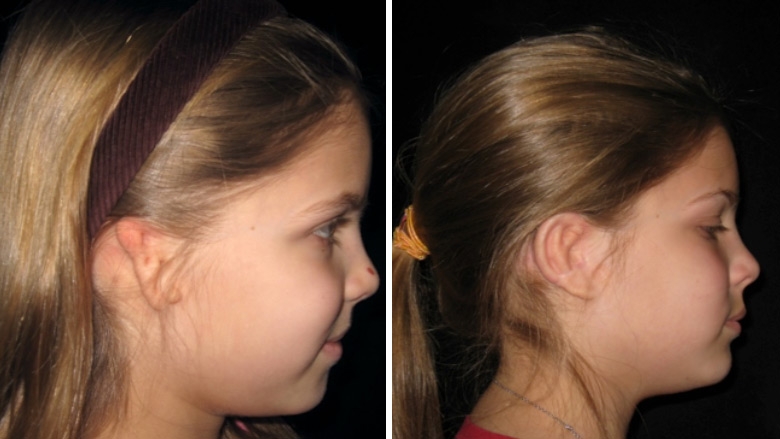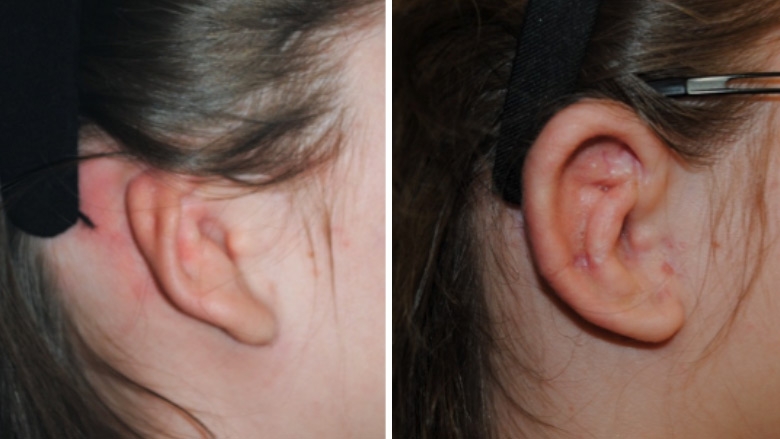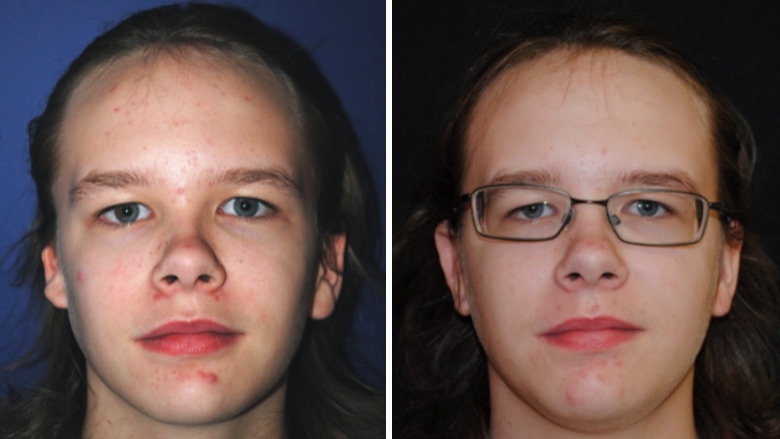Microtia
What is microtia
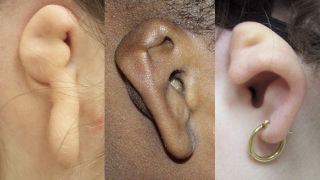 Examples of varying severity of microtia
Microtia is a congenital condition in which a baby is born with a small and malformed external ear. Microtia can range from mild to severe. Most commonly, various parts of the ear are malformed or underdeveloped (i.e. lobule type, conchal type, and small conchal type). In rare cases, the ear is completely missing. The medical term for this complete absence of the external ear is anotia.
Examples of varying severity of microtia
Microtia is a congenital condition in which a baby is born with a small and malformed external ear. Microtia can range from mild to severe. Most commonly, various parts of the ear are malformed or underdeveloped (i.e. lobule type, conchal type, and small conchal type). In rare cases, the ear is completely missing. The medical term for this complete absence of the external ear is anotia.
Most patients with microtia have an earlobe, but they may lack any other recognizable ear elements. Some will have a conchal cavity and some may have an ear canal.
Microtia occurs in approximately 1 in 6,000 to 7,000 births. It is more common in Hispanics, Asians, and Native Americans. It occurs twice as often in males than in females, and appears on the right side of the head twice as often as the left. Both ears will be affected in approximately 20 percent of microtia patients.
Causes
Microtia can occur by itself, or it may occur with syndromes such as hemifacial microsomia, where the entire half of the face is smaller, Treacher Collins syndrome and Goldenhar syndrome. It occurs more commonly in infants of diabetic mothers, and infants who were exposed to isotretinoin, thalidomide, alcohol or mycophenolate.
Evaluation and diagnosis
Microtia is typically diagnosed upon physical examination at birth. In rare cases, microtia may be diagnosed prenatally on ultrasound or fetal MRI.
Infants with microtia should be evaluated for any potential associated problems. At The Children’s Hospital of Philadelphia, children with microtia will undergo an evaluation by the Division of Otolaryngology, also known as Ear, Nose and Throat (ENT).
Your child will have her hearing tested. If she has any associated hearing loss, her team of physicians will make recommendations regarding the need for hearing aids or surgical options to restore hearing.
When your child is older and getting closer to an age where surgical treatment may be an option, a CT scan may be used to evaluate middle and inner ear abnormalities. CT imaging is not recommended during infancy to limit exposure to any unnecessary radiation, and because children are not yet candidates for surgery.
Children with microtia should also have a kidney ultrasound to rule out possible deformities, since the urinary system forms at the same time as the ear during prenatal development.
Treatment
Specialists involved in the treatment of children with microtia may include a clinical geneticist, audiologist, otolaryngologist and plastic surgeon.
In children who have diminished hearing, a bone anchored hearing aid (BAHA) may be recommended. This is a surgically implanted device that helps transmit sound by direct conduction through bone. Your child’s otolaryngologist will determine if a BAHA is the best treatment option for your child. It is important to coordinate any planned surgeries around the ear with a plastic surgeon to optimize the reconstruction possibilities.
Most children with microtia will eventually have surgery to rebuild the ear. Microtia reconstruction is a staged operation that first rebuilds the ear and later requires separation of the ear from the side of the head and placement of a skin graft. Additional stages may be needed to give additional definition to the final ear shape.
There are several different methods your child’s surgeon may use in ear reconstruction surgery. These techniques are mainly broken down by the material used to rebuild the ear: cartilage from the patient’s ribs, an implant, or an external prosthesis. Learn more about the different methods of ear reconstruction surgery and what to expect.
It is important to know that reconstructed ears are never as detailed and delicate as normal ears. The goal is to create an ear shape that is realistic enough that it does not attract attention to itself.
Though surgical reconstruction does not occur until your child is 6 to 10 years of age, early consultation can be reassuring and help you prepare for what to expect and as your child grows.
Microtia
Long term outlook
Most children born with microtia will develop and grow normally. If your child has an associated hearing problem, audiologic testing and follow up may be needed.
In addition to restoring normal appearance, ear reconstruction also provides functional advantages, such as being able to wear glasses or masks.
Facial differences may lead to teasing by peers — patient and family support groups can help you and your child connect with others with similar experiences.
Reviewed by , David W. Low, MD
